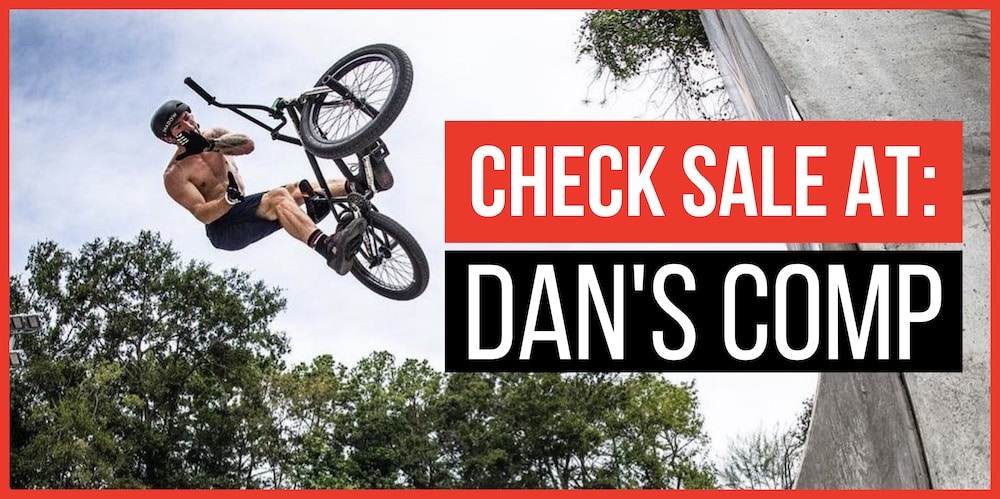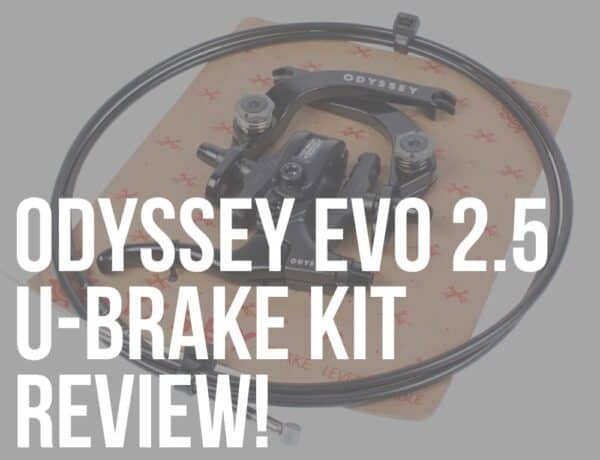Welcome to a journey through the fascinating world of skatepark elements and objects.
I’m excited to bring you on a fun ride through the world of skateparks.
A BMX rider’s playground filled with elements and objects that challenge the grit and sprout the creativity of every BMXer out there.
I created this article to explore the wonderful elements and objects that make skateparks a paradise for enthusiasts.
I aim to deepen your appreciation for these constructions and the rich culture surrounding them.
What Is A Skatepark?
Simply put, a skatepark is a specially designed area for activities like skateboarding and BMX riding (yeah, yeah, scooters, too!), filled with ramps, rails, and boxes, each offering unique challenges and experiences.
It’s a PLAYGROUND where you bring your creativity and skills to life.
Why Focus On Skatepark Elements?
Each element in a skatepark is a gateway to new tricks and skills, bringing variety and excitement to our sessions.
They are the heart of every skatepark, providing endless opportunities to push our boundaries and express our passion.
In short, skateparks help us progress faster. (Even hardcore street riders use skateparks to learn new tricks and refine their style.)
Common Skatepark Elements & Objects
| Sk8park element | Description |
| Quarter pipe | Curved ramp for transitions, aerial tricks |
| Bank | Non-curveed inclined surface for linking (& learning) tricks |
| Ledge | Raised surface for grind tricks & balance practice |
| Rail | Metal bar for grinds & technical tricks |
| Handrail & stairs | Staircase with handrail for advanced grind tricks & gaps/drops |
| Hubba | Ledge beside stairs or bank for grinds |
| Hip | Two ramps meeting at an angle, great for air tricks |
| Bowl | Large, deep, curved structure for continuous riding & aerial tricks |
| Nipple/volcano | Raised mound for aerial tricks |
| Euro gap | A gap with a drop, commonly accompanied by a bank (or quarter) |
| Movable objects | Repositionable elements like flat rails & ledges |
| Spine | Double-sided ramp for seamless transfers & tricks |
| Vert ramp | Large halfpipe with a vertical top section for high aerial tricks |
| Halfpipe | U-shaped ramp for continuous riding & tricks |
| Fullpipe | Completely circular ramp |
| Pole jam | Inclined pole for slides, grinds, & launching into the air |
| Pyramid | Triangular ramp with rails/ledges for transitions, air tricks & grinds |
| Manual box/pad | Flat, elevated surface for manual & nose manual tricks (& other tech combos) |
Let’s go straight to some skatepark terminology so you’ll better understand what everything is called.
1. Quarter Pipe
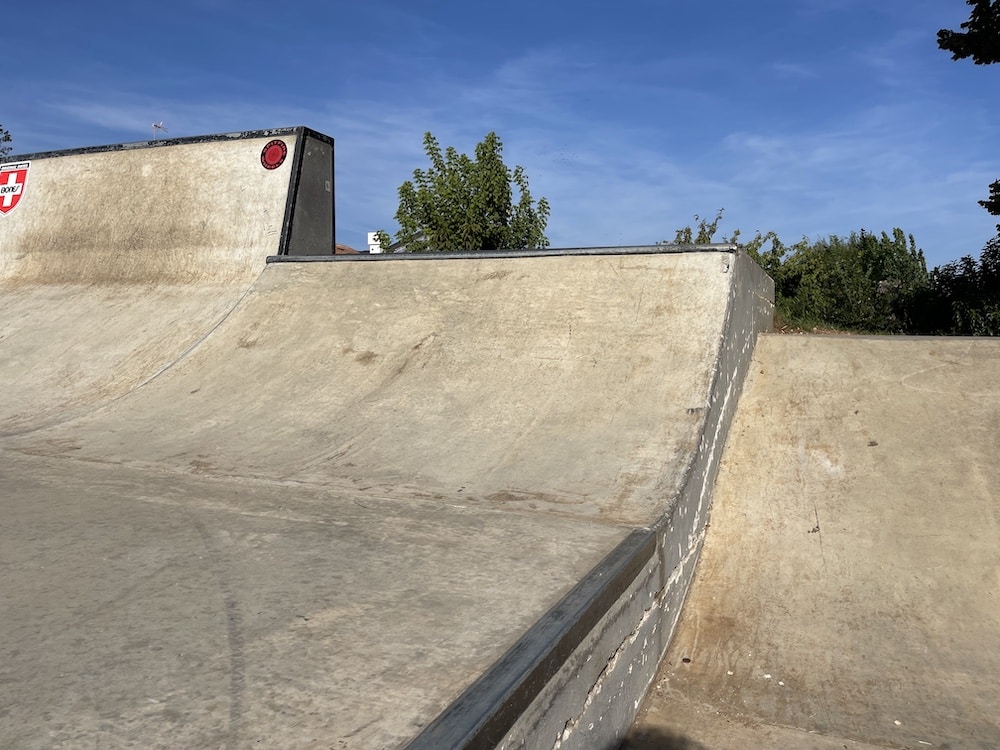
A quarter pipe is a ramp structure with a curved, concave surface, resembling a quarter section of a cylinder or a pipe.
It allows you to perform various tricks by gaining vertical height. But it’s also great for lip tricks.
It is a fundamental skatepark element, enabling you to experience transitions and execute aerial maneuvers, flips, spins, and grinds (hey, copings!) by riding up and down its surface.
Quarter-To-Bank
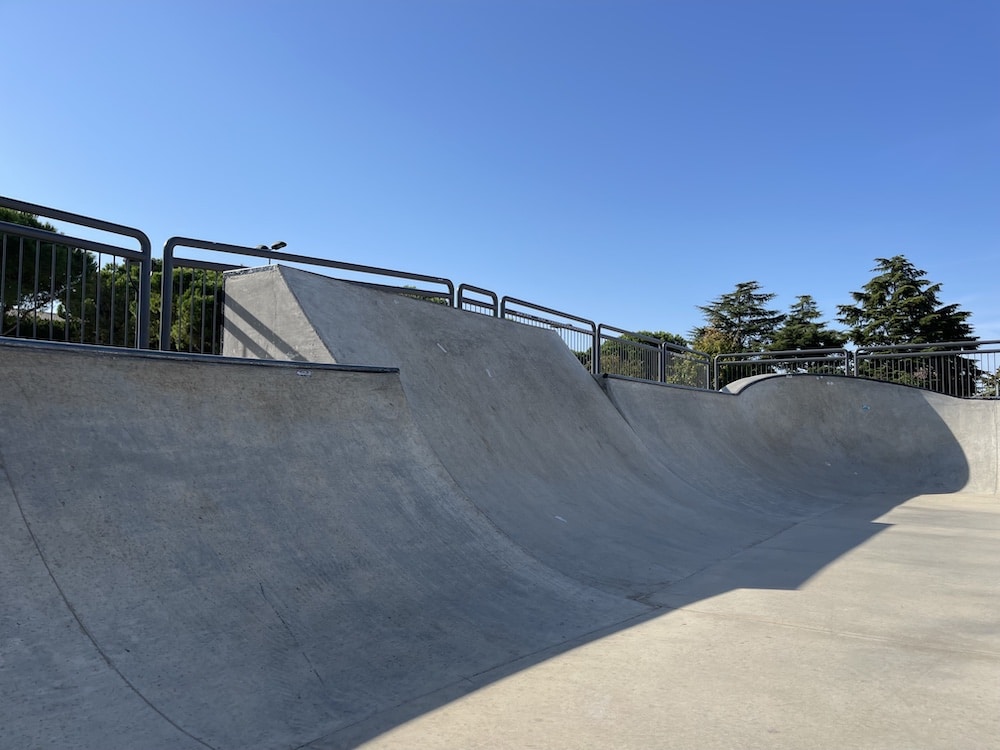
This is a variation of a quarter that extends into a bank, giving you additional freedom to perform various tricks.
Note: Quarter is one of the best skatepark objects to learn fakies on it.
2. Bank
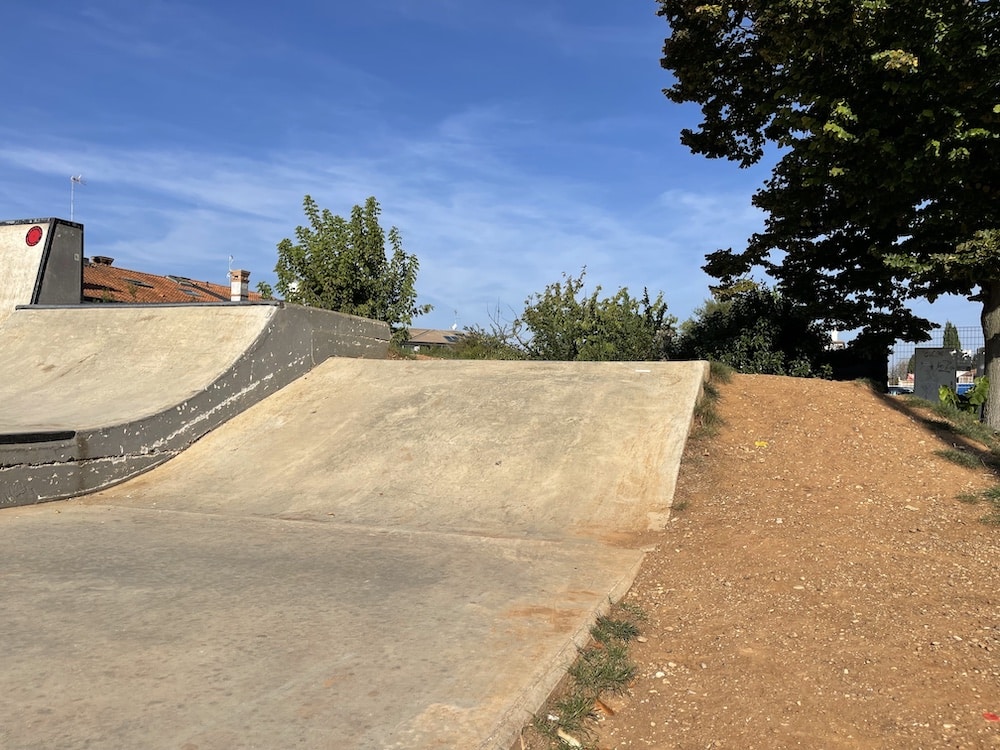
A bank is a sloped, usually inclined plane or surface that allows you to change elevation and gain momentum, serving as a foundational element in skateparks.
Banks allow BMX riders to perform tricks, such as 180s, barspins, downside tailwhips, etc., as they ride up and down the slope, making it a versatile component for linking different tricks and elements within a skatepark.
I also recommend using a bank if you want to learn to bunny hop on a BMX.
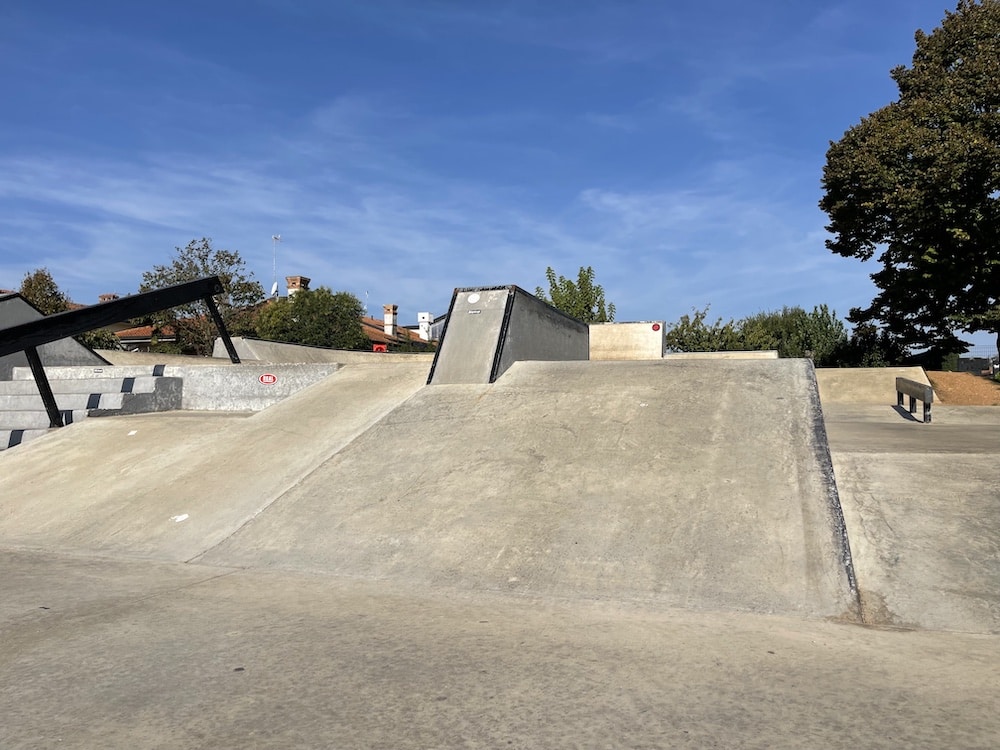
Bank-To-Wallride
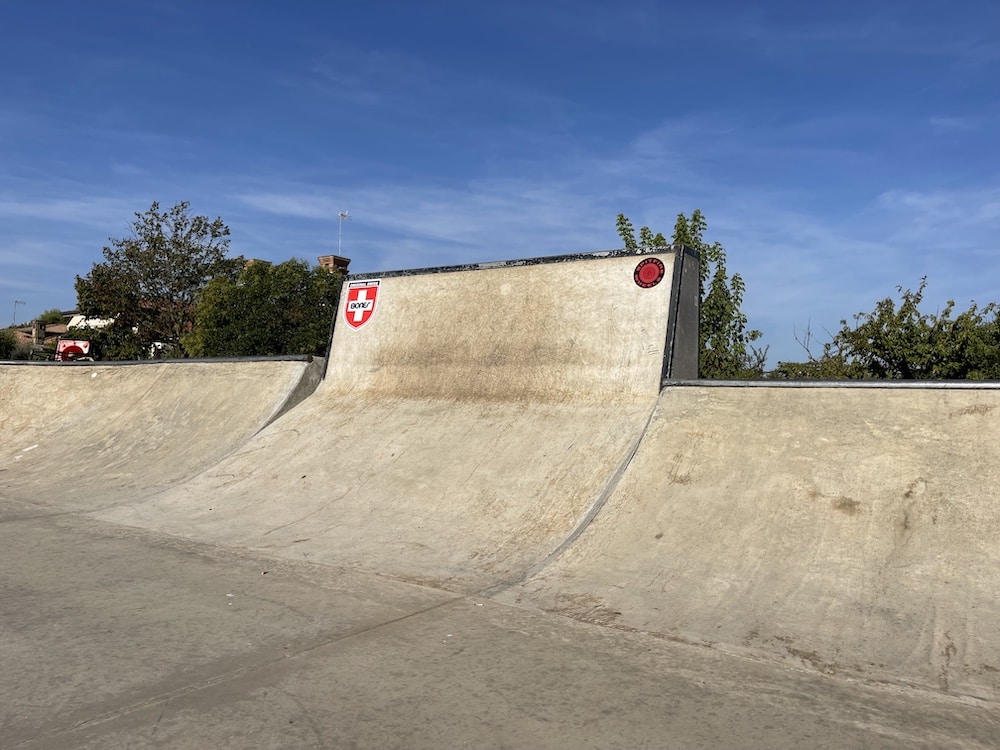
The bank-to-wallride element marries an inclined bank with a vertical wall, creating a versatile and challenging feature.
The purpose of this hybrid element is to allow BMXers to transition smoothly from riding up the bank to performing wallride tricks on the vertical surface.
It offers opportunities for enhanced creativity, skill expression, and the execution of complex maneuvers.
3. Ledge
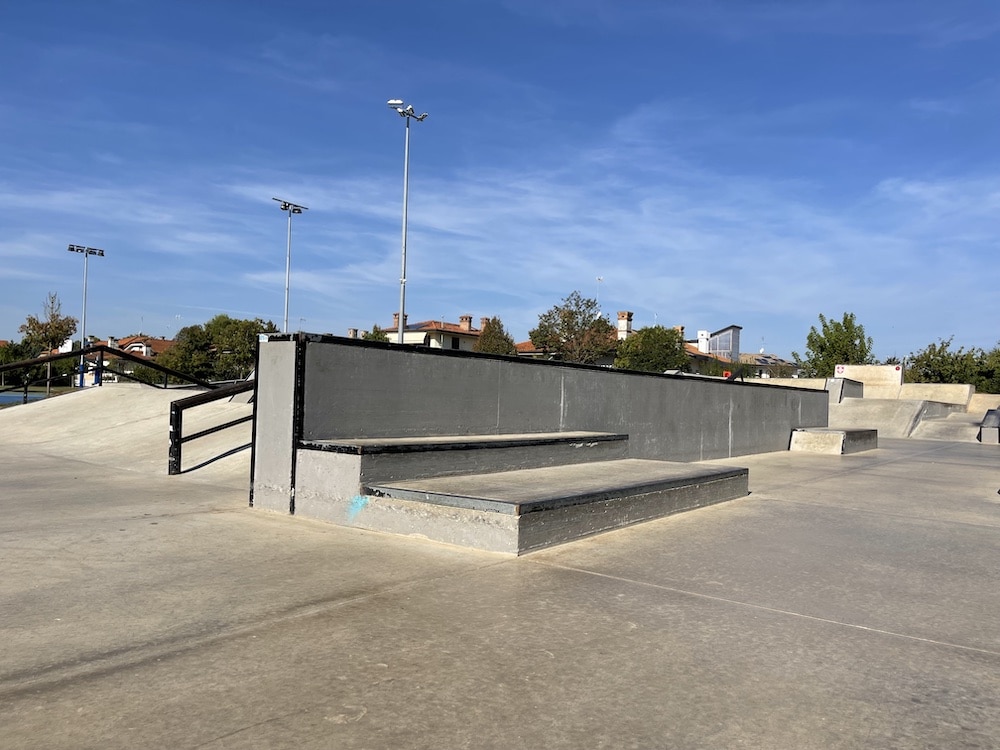
A ledge is a raised, flat, and typically elongated surface, often made of concrete or metal, designed for BMX riders to perform grind tricks.
It serves as a crucial element in a skatepark, allowing you to challenge your balance and precision while offering the opportunity for creativity in linking various tricks and maneuvers together.
Yup, I’m talking about technical wizardry.
Friendly tip: Use ledges to learn all your grind tricks first before moving to a rail.
4. Rail
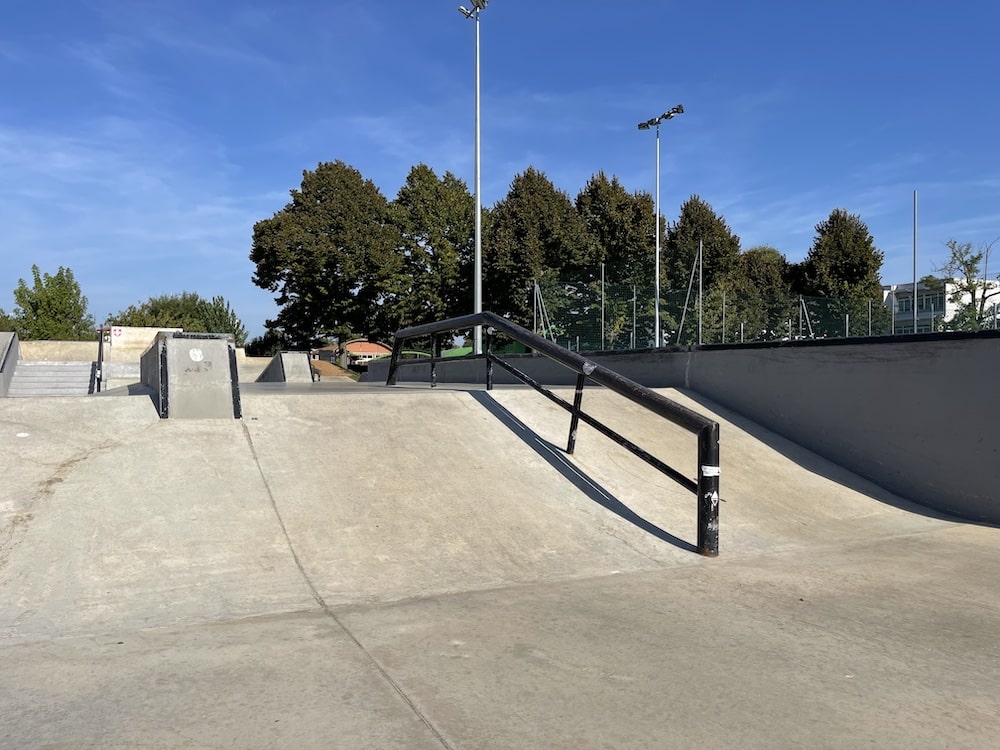
A rail is a metal bar elevated above the ground, serving as a distinctive element where BMX riders can perform grind tricks.
The rail aims to challenge your balance further, putting your pegs, pedals and cranks to some good use.
Below are the two most common rail examples: The round and the square rail.
Round Rail
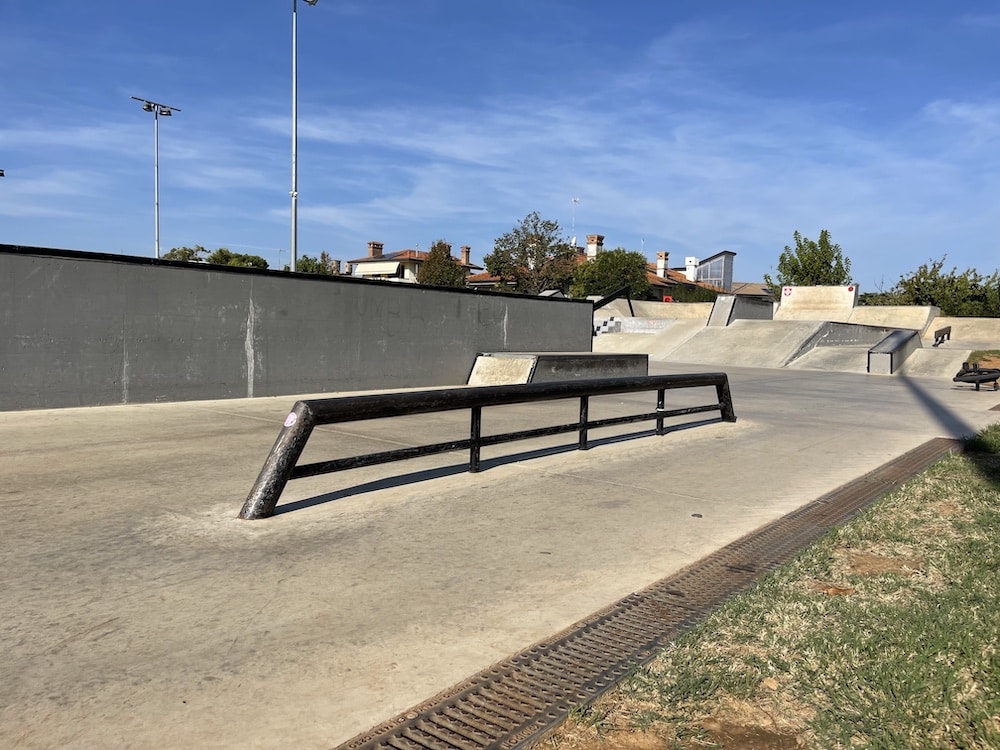
Square Rail
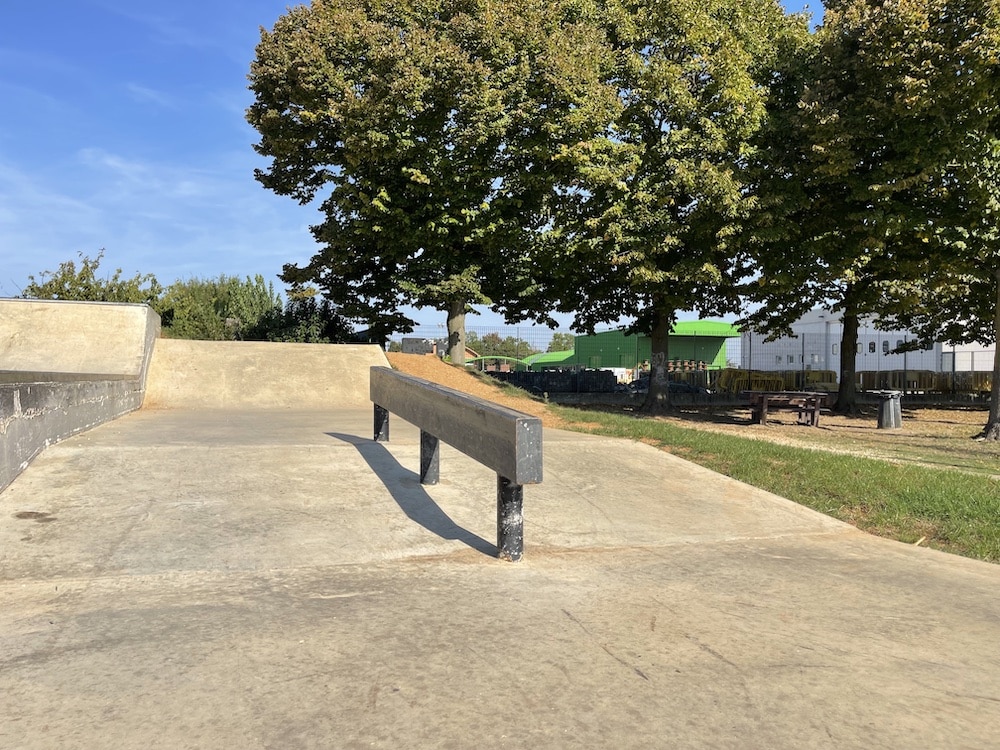
5. Handrail & Stairs
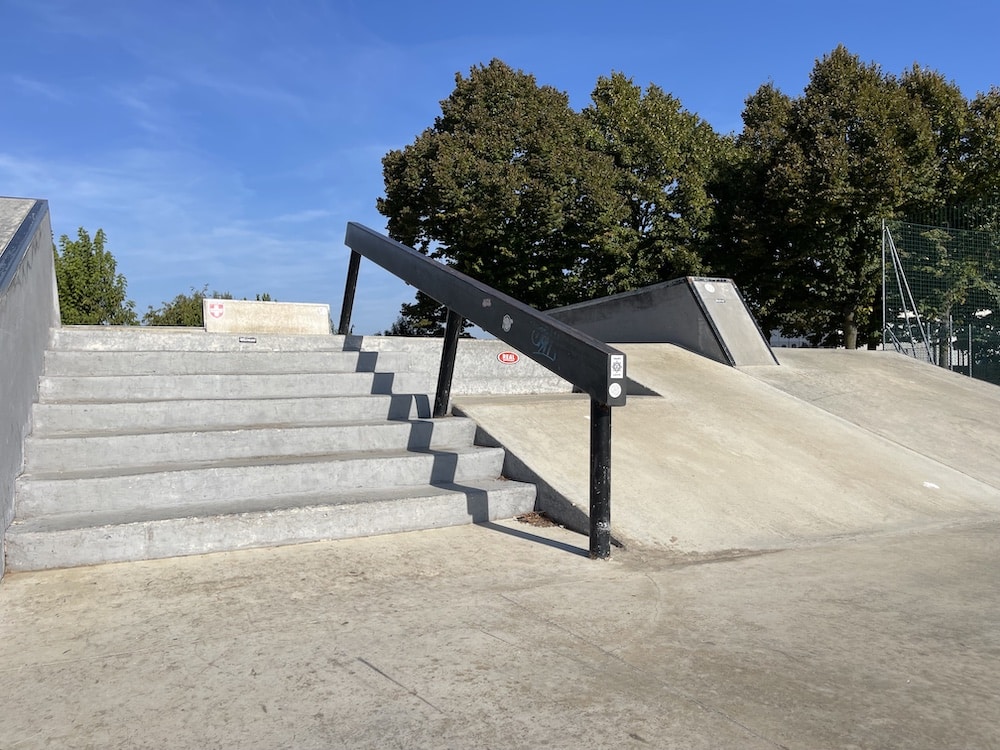
A handrail is typically a metal bar parallel to a set of stairs or slope/bank, originally intended for assistance and safety but repurposed to perform grind tricks.
A handrail is a more advanced skatepark object that you shouldn’t use for learning basic grinds.
Use flat rails first, progress to hubbas and then send it on a handrail.
6. Hubba
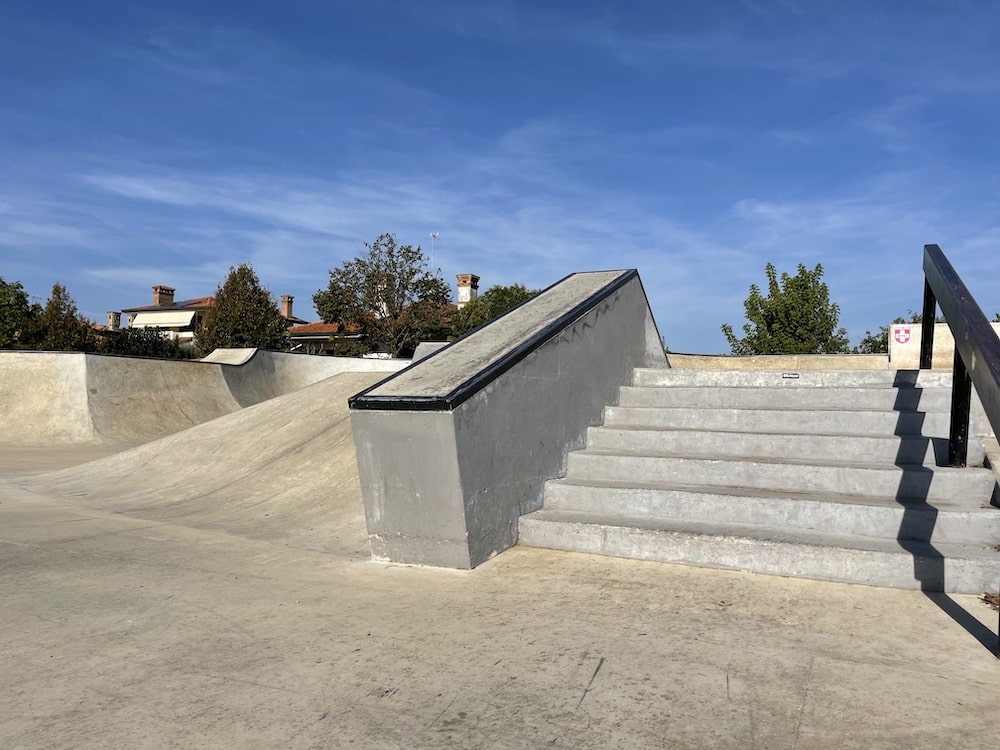
A hubba is a ledge usually positioned alongside a stair set or a bank, similar to a handrail.
This element is integral in skatepark design as it allows you to combine technical skills and creativity, simulating real-world urban environments and challenges within the controlled borders of a skatepark.
7. Hip
A hip is a junction where two inclined banks or ramps meet at an angle, providing a transitional surface for BMX riders to perform air tricks, turns, and transfers from one section to another.
The purpose of a hip is to offer a versatile and dynamic element that challenges your ability to manage angular transitions and directional changes.
Below are the example hip using banks and quarter pipes.
Bank-To-Bank Hip
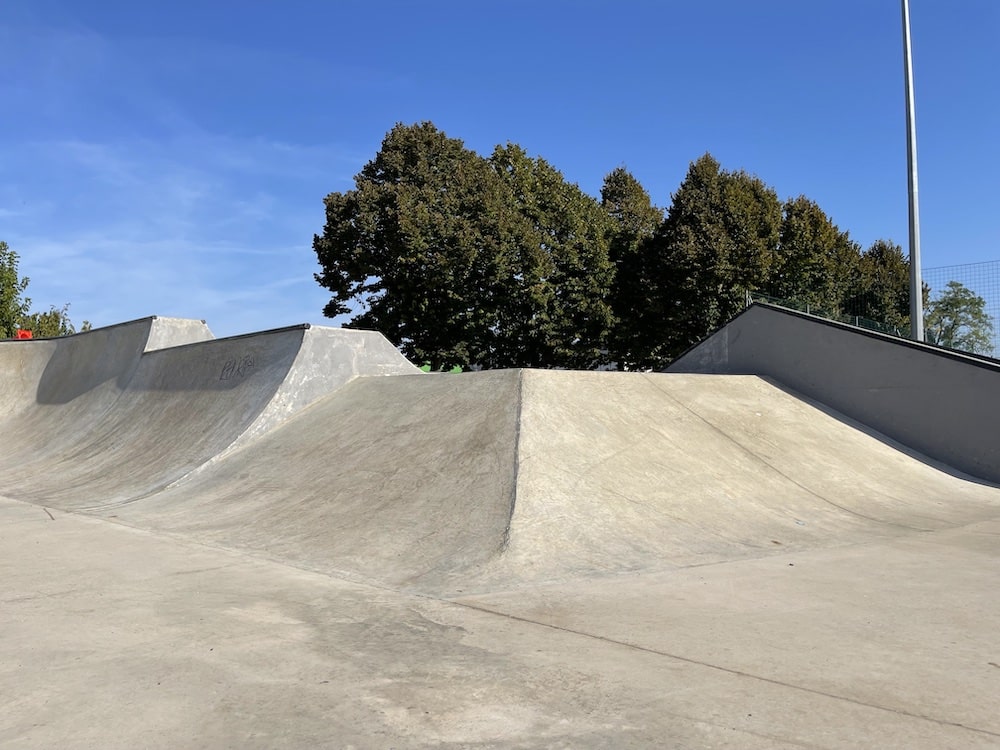
Quarter-To-Quarter Hip
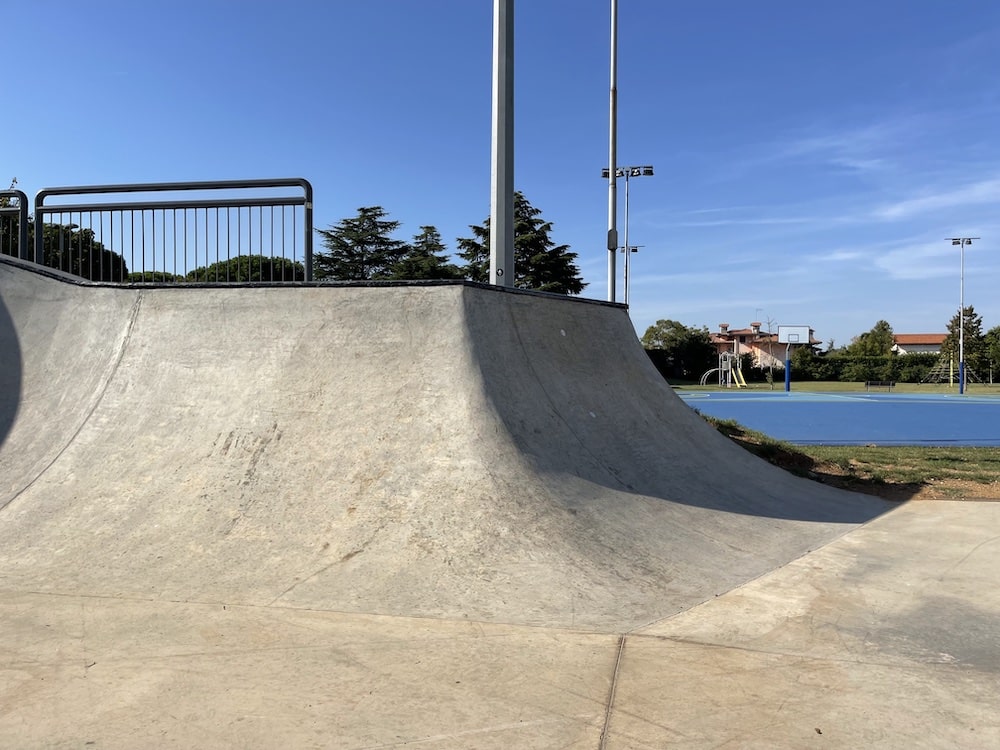
8. Bowl
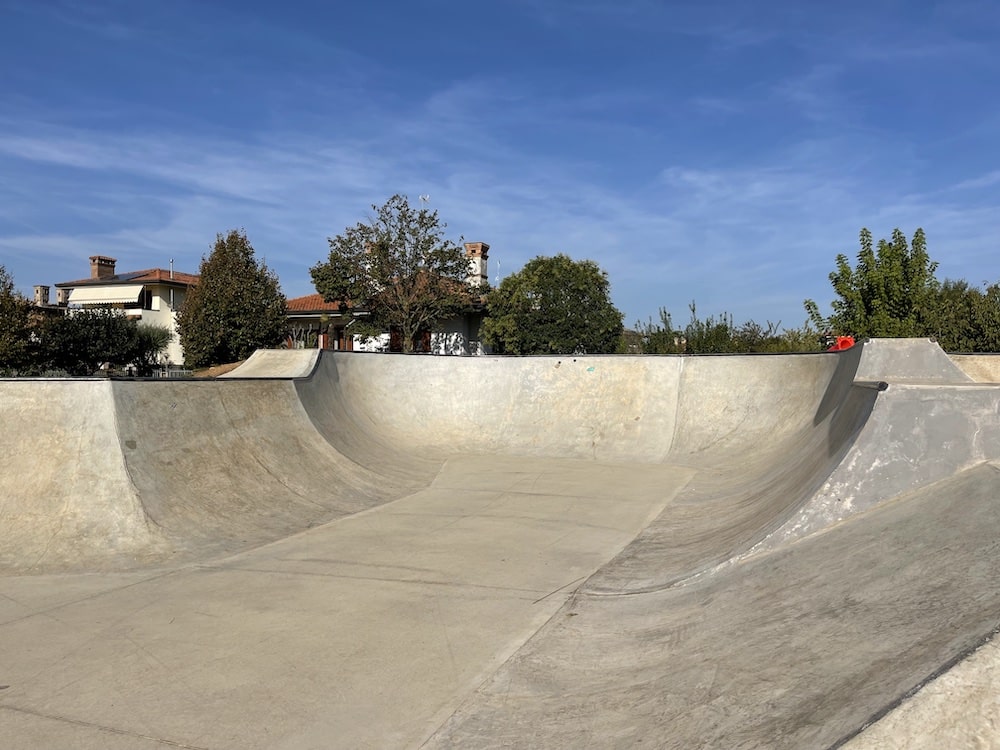
A bowl is a large, concave, and usually deep structure resembling an empty swimming pool. It allows BMXers to ride along its curved walls and perform many tricks, transitions, and aerial maneuvers.
The bowl challenges your abilities to maintain speed and balance on varying transitions and elevations.
It provides a fluid and continuous riding experience that encourages the development of flow, rhythm, and advanced techniques.
Capsule
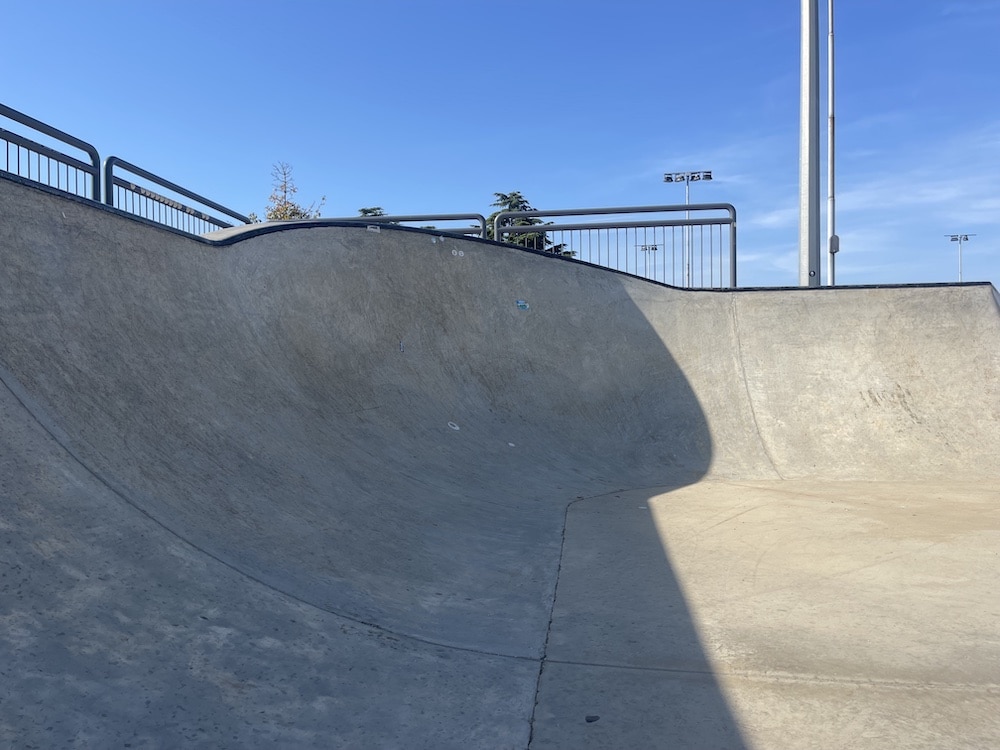
A capsule is usually a section in a bowl with an over-vert ramp. Some capsules have full over-vert and some more mellower.
9. Nipple (Or Volcano)
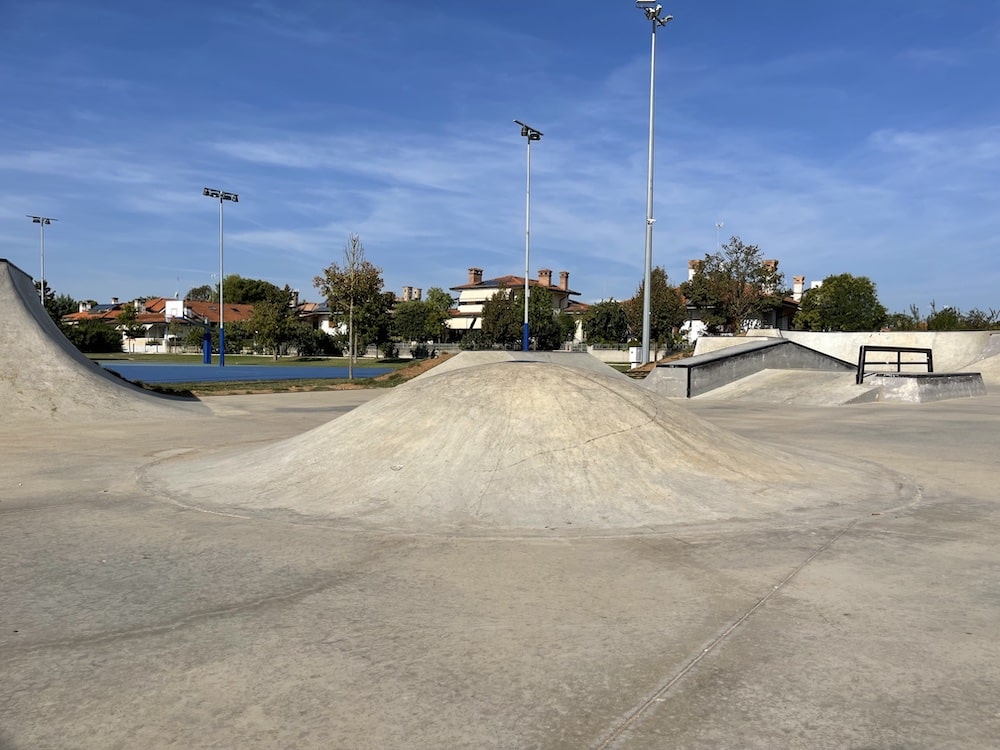
A nipple is a small, raised mound or bump in the skatepark terrain designed to offer BMXers the opportunity to perform aerial tricks and tire slides.
Some nipples, like the one above, are low, but some can be very high. (The higher version is usually called a volcano.)
10. Euro Gap
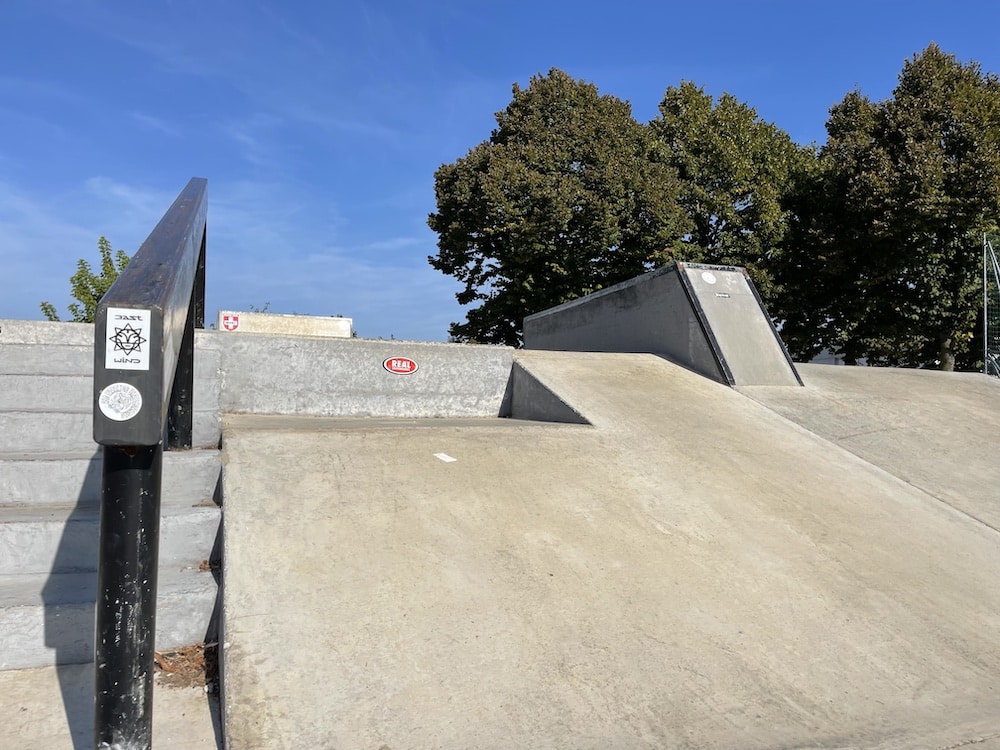
A euro gap consists of a flat plane (at the top) leading to a drop, followed by another flat section and then usually ending (or starting) with a bank – simulating a gap.
The euro gap challenges you to accurately gauge speed, timing, and trajectory to successfully clear the gap and land tricks, adding a versatile and engaging obstacle within the skatepark landscape.
11. Movable Objects
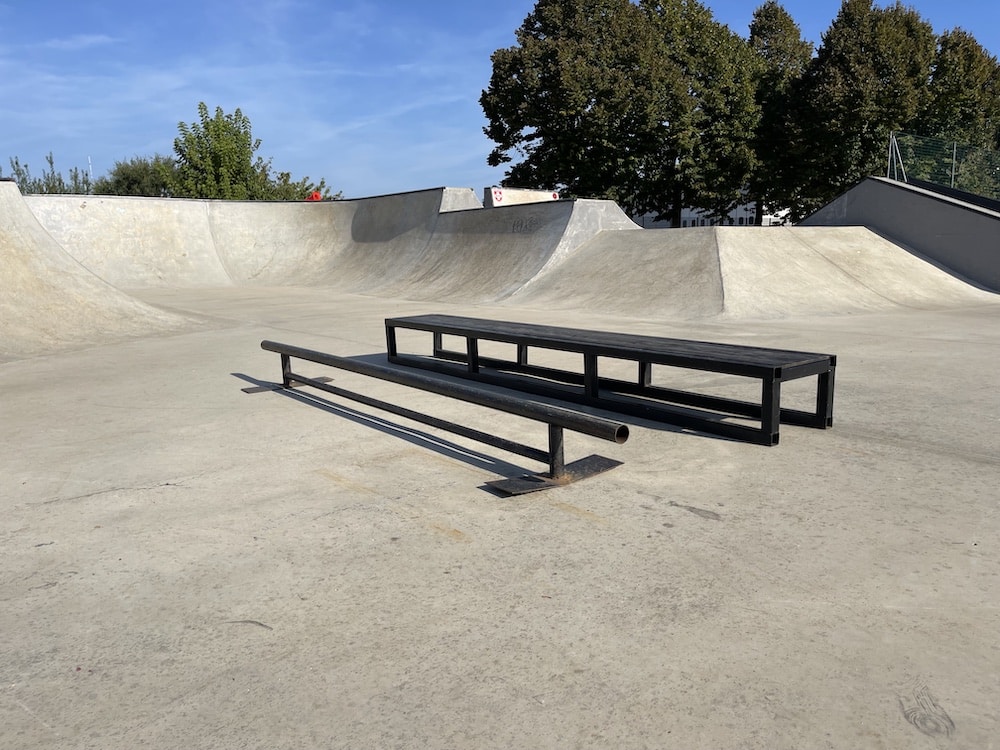
In a skatepark, movable objects like flat rails and ledges are versatile elements that can be repositioned to create customized arrangements.
These portable features enable riders to modify the skatepark layout, fostering creativity, skill development, and varied riding experiences by offering endless possibilities for new lines and obstacle configurations.
12. Other Skatepark Elements
While my current local skatepark doesn’t have every imaginable skatepark object, I wasn’t able to take pictures.
However, here are some other elements you can find at a skatepark:
- Spine: A spine is a double-sided ramp structure where two quarter pipes share a common coping, allowing seamless transfers and performing tricks between the two sides.
- Vert ramp: A vert ramp is a large, half-pipe structure featuring a vertical section at the top, allowing you to gain significant height and perform advanced aerial tricks.
- Halfpipe: A halfpipe is a U-shaped ramp structure that allows you to move back and forth between its two inclined sides.
- Fullpipe: A full pipe is a completely circular, tube-like structure allowing you to ride around the inside surface, performing tricks while experiencing 360-degree transitions.
- Pole jam: A pole jam is an inclined pole or bar, typically anchored at a slant, allowing you to perform slide or grind tricks, often launching you into the air.
- Pyramid: A pyramid is a four-sided, triangular ramp structure that you can use to gain air, perform tricks, and transition between different elements within the park. Pyramids also usually have rails in the middle and ledges on the side.
- Manual box/pad: A manual box or pad is a flat, elevated surface (low and really wide ledge, if you will) where you can perform manual and nose manual tricks.
Note: When I get images of these, I’ll add them to the list.
Conclusion: Skateparks Rock!
Wow, what a thrilling ride through the vibrant world of skatepark elements.
We’ve explored the diverse range of objects, each with its unique flavor, that make our BMX sessions so DYNAMIC and ENRICHING — from ledges and rails to the creative movable objects and exciting bowls.
These elements are not just structures but the heart and soul of our BMX riding experiences.
Each object adds its unique rhythm to our BMX riding, letting us explore, learn, and push our boundaries in new ways every time.
So, dudes, let’s keep exploring new parks, embracing fresh challenges, and sharing our thrilling experiences!
Every new park is a new adventure, a chance to grow, learn, and add our vibes to the global BMX community.
Further reading:
- BMX Skatepark Etiquette
- 14 Easy Beginner BMX Tricks
- 28 Common Beginner BMX Mistakes
- How-To: BMX Bike Maintenance



